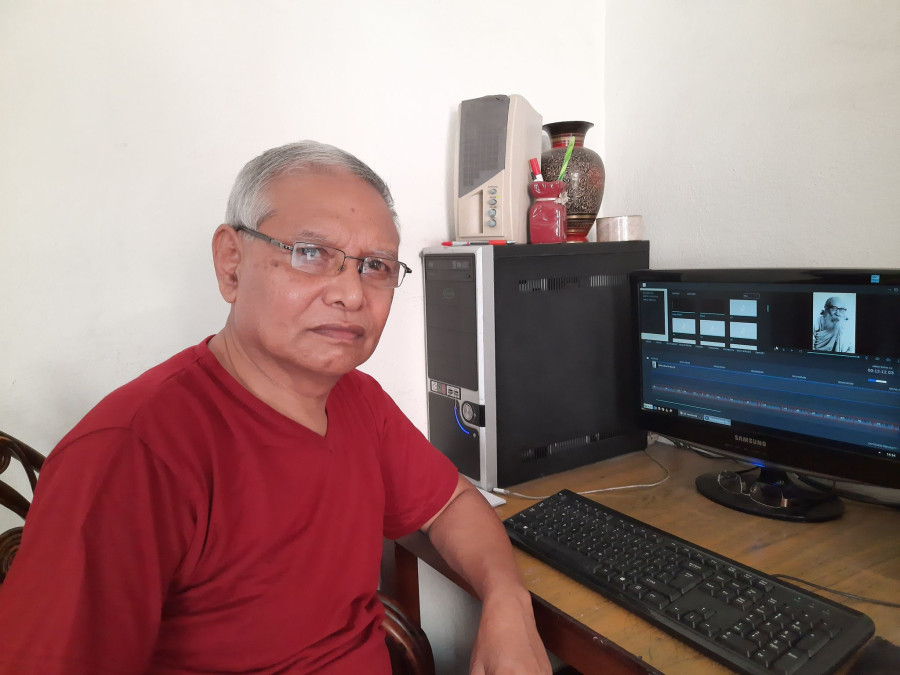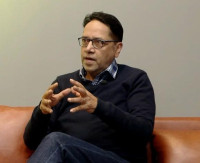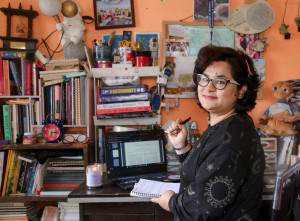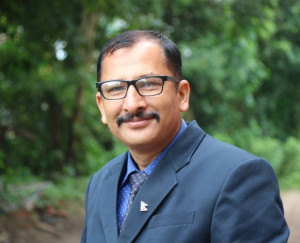Culture & Lifestyle
How the lockdown turned Shanta Raj Shakya into a popular storyteller
To pass time, Shakya, 65, a retired government employee, started reading Newa folk stories and essays on his private Facebook page. Now, he has become a household name.
Srizu Bajracharya
Shanta Raj Shakya has a way of telling stories, even histories, that makes one feel as though he is reading just for you. As though we know him, and he us. Shakya’s voice is confident and his narration expressive. Even without visuals, his recordings, made in Nepal Bhasa, draws you in.
The 65-year-old, who lives in Na: Bahal, Patan, has about five thousand friends on Facebook, of which over a thousand are followers that sprung up during the lockdown. For those who are unaware, Shakya has over the months become a popular name among Newa households for his posts on Facebook. Some have even deemed him the "grandfather" of tales.
“I can’t make any new friends on Facebook, as I have exceeded my maximum number of connections but I get messages on my messenger, where people have asked me to accept their friend request just to listen to my stories,” says Shakya, who is a retired government officer.
Shakya is still relatively new to the ways of the internet and technology. But over the years, he has grown fond of Facebook, which he frequently uses to get updated.
“The internet for me is Facebook and it is the same for my wife as well. And it’s also where I find a lot of information, even information Google doesn’t have, but of course it is tricky,” he says.
Besides being a means to connect with people, and search for information, the social networking service has become a platform for him to read folktales of various Nepal Bhasa writers like Karunakar Vaidya, Prem Bahadur Kansakar and Chittadhar Hridaya, among others. Shakya also reads his own essays about Newa culture and lifestyle. He has also read the works of renowned international authors translated in Nepal Bhasa.
He collects stories and information through various places and platforms, and then refers to them when narrating stories. One of his popular recordings is of Sithi Nakha, which received more than 10,000 views and was widely shared. It talked about the festival’s significance and how it used to be celebrated and how it reflects the cultural lifestyle of Newa communities. He has also made videos about Newa house architecture. And while his recordings are simple, more like PowerPoint slideshows, his stories still resonate with many.
Shakya records his voice on his phone and later joins it with relevant photos through the Filmmoto application. On most days, the process takes him the whole day. “If need be our brain can still process information, I realised it’s just a matter of practise,” he says on learning to make videos and navigate social media at 65.
But Shakya says he has been making videos much before the lockdown. One of his first videos was based on Brahma Shumsher Jung Bahadur Rana’s The Great Earthquake in Nepal 1934 AD, says Shakya which was well received and appreciated.
“I think I started making videos more regularly after I retired from the Department of Livestock Services in 2014,” says Shakya. And more religiously after he started getting positive messages from people during the lockdown.
These days, when he is late to post his videos, he gets calls from elders pecking at him with the question, ‘thau chay baakhan pya mawau?’ (Why didn’t you post the story today?’)
Shakya loves reading Nepal Bhasa literature and has also written short stories and numerous essays about Newa culture in national dailies. Many from his community also know him for his wordbook ‘Newa:Na’, a collection of names in Nepal Bhasa. “I wrote the book years back as the names we give our children are mostly Sanskrit names, even my name Shanta Raj comes from Sanskrit words and so I thought I should collect lexicons that could help people with finding names for their children in their own language,” he says.
When Shakya speaks, he often reiterates his sentences in Nepal Bhasa, the language he is most comfortable and confident in. His words are unadulterated with urban expression and exact for attention. “I know a lot of young people can understand Nepal Bhasa but cannot utter complete sentences and I don’t blame them for not being fluent in the language,” he says.
Shakya himself believes his fluency in the language came because of his mother and family members who introduced him to the language from a very young age.
“When I was eight I used to read stories to my mother as she knitted clothes; she would ask me to read stories for her that she bought for me and that might have changed me in the process. I started enjoying reading for people,” he says. The first book he had recited for his mother was Durga Lal Shrestha’s Salachhyonya Bela.
As a young man, he grew more conscious about his native language when in the Panchayat period Radio Nepal stopped broadcasting news in Nepal Bhasa and running a show called Jeewan Dabuu, a radio programme that talked about culture and arts in Nepal Bhasa.
“One of my friend’s family owned a radio and they used to place the radio near the window so everyone in the bahal could listen to it,” he says. His family and his neighbours would gather in the courtyard in the mornings and evenings just to listen to radio programmes. After the programmes just stopped airing, conversations at the dinner table started becoming about how the new system was dominating the development of Newa language, culture and lifestyle. And this shaped Shakya's understanding of why language is important and how it identifies communities.
“The event made me aware of my language and the politics that surrounded our development at the time. And so it pushed me more to learn and protect my language,” he says.
But over the years, Nepal Bhasa has become more of a "home" language, used only at home to communicate with elders, he says. “The language is not used professionally and not even taught in schools and so naturally, our development of the language and literature has taken a backseat. The younger ones don’t read or write in Nepal Bhasa,” he says.
But things are gradually changing and a lot of young people have taken interest in the language again. “I am hopeful that the language will pick up again,” he says. “Many people also tell me that they have been making their children listen to the baakhan (stories) that I read. Many Newa people from around the world have messaged and thank me for making the folk stories accessible for their children,” he says.
Shakya, however, believes people enjoy listening to the baakhan from various authors that he shares because he is reading it out for them. “I think these days the young generation can understand the language but have trouble reading them. It's the same for the millennials as well, our grasp in the language is more orally than in reading practices, and that is a gap we still must fill slowly,” he says.
But regardless of the appreciation, he is still unable to understand his popularity. “I don’t think I have done anything out of the ordinary. I was just making use of my free time,” he says. Seeing his popularity, many people have also reached out to him to teach him the tactics of extending to a wider audience.
“One of my son’s friends was telling me that I shouldn’t upload the stories regularly but schedule it with gaps so that people remain curious about the content,” he says. Currently, Shakya has been uploading two stories a day, one, in the afternoon, a short story from upcoming Nepal Bhasa writers and another in the morning from endeared Nepal Bhasa litterateurs.
“But, you see, to become famous was never my intention. But because I know people expect me to upload stories every day, I want to be loyal to them and so I just want to continue what I have been doing,” he says. “I am just grateful for the love people have shown me.”




 7.12°C Kathmandu
7.12°C Kathmandu















